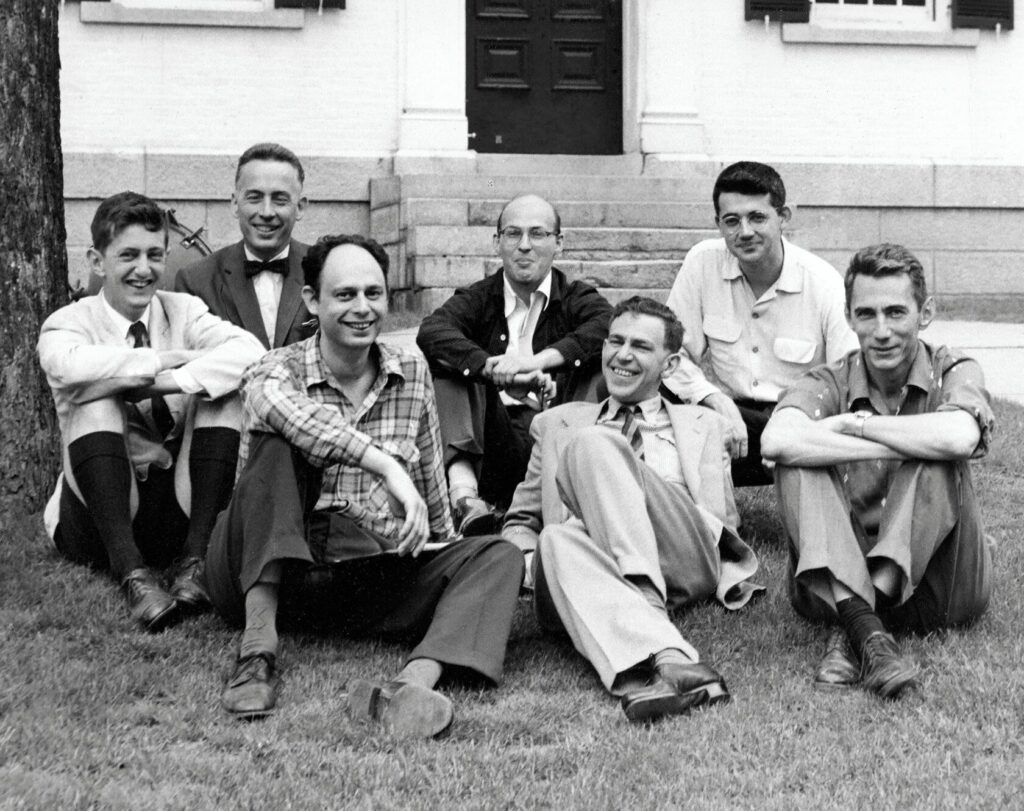In the corridors of technological innovation, the story of Artificial Intelligence (AI) weaves a complex tapestry, spanning decades of aspiration, triumphs, setbacks, and paradigm shifts. From the early dreams of creating machines that could emulate human thought to the present era of transformative AI applications, this narrative is marked by remarkable milestones and insightful lessons.
The Birth of a Field: The Dartmouth Workshop
The term “Artificial Intelligence” echoed through the halls of academia when John McCarthy convened the Dartmouth Workshop in the summer of 1956. It was here that the foundational stones of AI were laid, as pioneering minds such as Marvin Minsky, Nathaniel Rochester, and Claude Shannon gathered to discuss the possibility of creating machines capable of thinking, learning, and problem-solving like humans. This historic event marked the birth of the AI field, setting the stage for decades of inquiry.

The Early Endeavors: Logic Theorists and General Problem Solvers
Amidst the optimism of the late 1950s and early 1960s, researchers delved into symbolic AI, the realm of logic, and problem-solving. The Logic Theorist, an early AI program developed by Allen Newell and Herbert A. Simon, made waves by proving mathematical theorems using human-like reasoning. Concurrently, the General Problem Solver, another Newell and Simon creation, exhibited the potential for machines to tackle complex problems by representing them in symbolic form.
As the 1960s progressed, the concept of expert systems emerged—a leap towards imbuing machines with domain-specific expertise. These systems, encoded with rules and knowledge from human experts, demonstrated proficiency in tasks like medical diagnosis and chess-playing. MYCIN, an expert system designed to diagnose bacterial infections, garnered particular attention, underscoring the potential of AI in complex decision-making scenarios.
Into the AI Winter: Unrealized Expectations (1970s-1980s)
The road to AI’s ascendancy was not without obstacles. The field experienced a period of disillusionment known as the “AI winter.” The initial enthusiasm gave way to frustrations as the lofty visions of creating human-level intelligence met technological limitations. Funding dwindled, and AI research faced skepticism due to overhyped expectations, temporarily dimming the prospects of progress.
Despite the challenges, researchers remained undeterred. A shift towards connectionism, a model inspired by the human brain’s structure, breathed new life into AI research. Neural networks, which simulate the interconnected neurons of the brain, regained attention. In the 1980s, the development of the backpropagation algorithm offered a way to train neural networks, rekindling hopes of creating sophisticated learning systems.
The Emergence of Connectionism and Neural Networks
Despite the challenges, researchers remained undeterred. A shift towards connectionism, a model inspired by the human brain’s structure, breathed new life into AI research. Neural networks, which simulate the interconnected neurons of the brain, regained attention. In the 1980s, the development of the backpropagation algorithm offered a way to train neural networks, rekindling hopes of creating sophisticated learning systems.
Machine Learning and Renaissance of AI (1990s-2010s)
As the 1990s dawned, machine learning took center stage. Algorithms capable of learning patterns from data became the focus. The confluence of larger datasets and increased computational power proved transformative. Applications like spam filters, recommendation systems, and speech recognition flourished, demonstrating the practical potential of AI in everyday life.
The 2010s ushered in a renaissance of sorts for AI with the resurgence of deep learning. Deep learning, a subset of machine learning leveraging multi-layered neural networks, made astounding strides in image and speech recognition. GPUs and the deluge of data turbocharged progress. Industries like healthcare, finance, and entertainment embraced AI, with applications including autonomous vehicles, medical diagnostics, and natural language processing.
Currently, AI is advancing across various fronts. Deep learning drives breakthroughs in areas like image recognition and language processing. Healthcare benefits from AI in diagnostics and treatment plans. Autonomous systems, NLP, and ethical AI are prominent. Creative domains, business applications, and environmental solutions are expanding. AI regulation and governance are gaining attention. In essence, AI’s influence is broadening across sectors, with ongoing research and ethical considerations.
Frequently Asked Questions (FAQ)
The Dartmouth Workshop in 1956, convened by John McCarthy, marked the birth of AI. Pioneering minds gathered to discuss creating machines that could think like humans.
Expert systems encoded human expertise and knowledge, demonstrating proficiency in domains like medical diagnosis. MYCIN, for instance, diagnosed bacterial infections.
The “AI winter” was a period of skepticism and reduced funding due to unrealized expectations and technological limitations in achieving human-level intelligence.
Infosoft is a team of IT and QA engineers. We provide companies with technical talents and product development experience to create world-class software. You can scale up and down your remote software developing team at any time without any financial risk.


